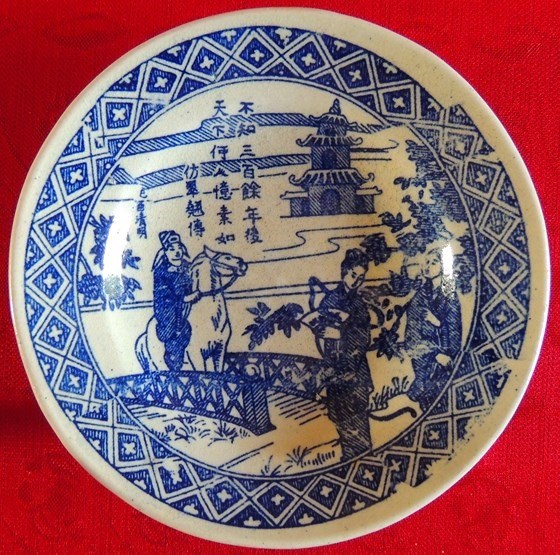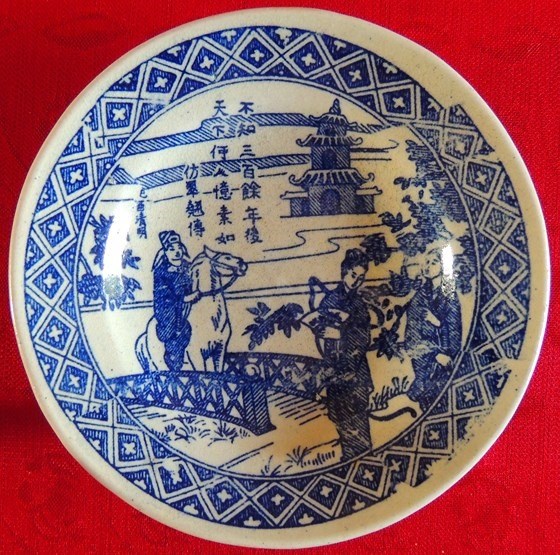
A monument management centre in the central province of Ha Tinh has announced the discovery of an old pottery disk that depicts the Kieu sisters, the characters in the famed Tale of Kieu poem epic.

The pottery disk depicting the Kieu
sisters was found in Nghe An (Photo: sggp.vn)
Ho Bach Khoa, head manager at the
centre designated for the Tale of Kieu’s author Nguyen Du, said on August 23
that his centre got the disk from antique collectors in neighbouring Nghe An
province.
Khoa believed that the disk was produced in the 1940s by pottery makers in the
southern region of Vietnam.
The disk is 17cm in diametre and in good condition. The white disk is decorated
with a blue coloured painting depicting a scene from the Tale of Kieu, in which
the Kieu sisters are walking and enjoying the spring when they meet the
horse-riding Kim Trong character.
Khoa said the scenes in the Tale of Kieu were rarely depicted on pottery
produced in the southern region, so the disk is a rare item. Khoa said the
centre is showcasing the disk for researchers and the public.
Nguyen Du (1765-1820) was a mandarin and a gifted poet of Vietnam in the
imperial time. His epic poem - the Tale of Kieu is considered one of the
greatest poetic works of the country.
Source: VNA
With an increasingly vibrant and widespread emulation movement aimed at building cultured residential areas and cultured families, Yen Thuy District has been making steady progress toward improving both the material and spiritual well-being of its people, while fostering a civilized, prosperous, beautiful, and progressive community.
Once lacking recreational spaces and community facilities, Residential Group 2 in Quynh Lam Ward (Hoa Binh City) has recently received attention for the construction of a new, spacious, and fully equipped cultural house. The project followed the model of state support combined with public contributions in both labor and funding.
The "All people unite to build cultural life" movement, which has been effectively integrated with Kim Boi district’s socio-economic development goals, is fostering a lively spirit of emulation across local residential areas, hamlets, villages, public agencies, and enterprises. In addition, through the initiative, traditional cultural values are being preserved and promoted, while community solidarity and mutual support in poverty reduction and economic development are being strengthened.
A working delegation of the Hoa Binh provincial People’s Committee led by its Permanent Vice Chairman Nguyen Van Toan on June 11 inspected the progress of a project to build the Mo Muong Cultural Heritage Conservation Space linked to tourism services in Hop Phong commune, Cao Phong district.
Born and growing in the heroic land of Muong Dong, Dinh Thi Kieu Dung, a resident in Bo town of Kim Boi district, in her childhood was nurtured by the sweet lullabies of her grandmother and mother. These melodies deeply imprinted on her soul, becoming an inseparable part of her love for her ethnic group's culture. For over 20 years, this love for her hometown has driven Dung to research, collect, and pass down the cultural values of the Muong people to future generations.
In the final days of May, the Ethnic Art Troupe of Hoa Binh Province organized performances to serve the people in remote, mountainous, and particularly disadvantaged areas within the province. These were not just ordinary artistic shows, but they were the meaningful journeys aimed at spreading cultural values, enhancing the spiritual life of the people and contributing to the preservation of ethnic minority cultural identities.



